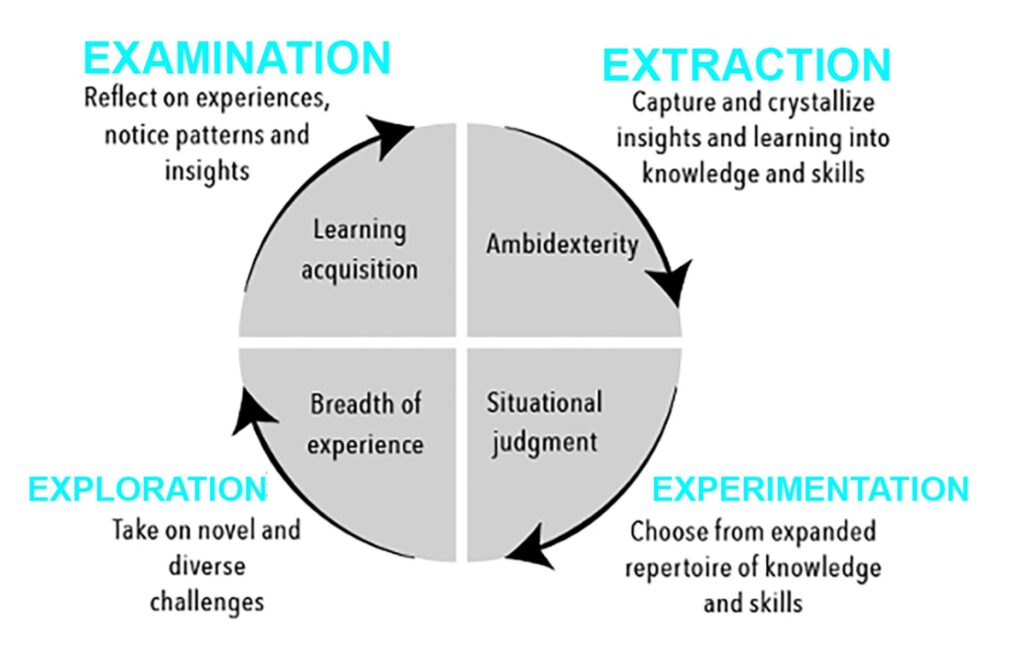Abilities of top leaders
1. Exploration
Leaders at more senior levels tend to take on more demanding challenges and gravitate toward more complex assignments. They also have more curiosity about the world around them.
2. Examination
Learning occurs mainly through thinking and reflecting on experience. High-fliers leverage strong cognitive ability to interpret and encode information in complex, uncertain environments.
3. Extraction
Top performers are able to crystallize insights and learning into knowledge and skills, which means they acquire more job knowledge faster and resolve hard questions better. This reflects the essence of learning agility – the “meta-competency” that enables the acquisition of other competencies and knowledge.
4. Experimentation
The most successful leaders are able to choose the knowledge and skills to facilitate long-term performance, even when that means sacrificing short-term results. The capacity to select behaviors to match the specific demands of situations and people is reflected in the high predictiveness of emotional intelligence as a marker of potential – especially self-control.

How do I spot the talent markers?
Given the above desiderata, ask yourself the following questions to identify the right talent:
1 Learning acquisition
How quickly can the individual translate their experiences into knowledge and skills?
2 Breadth of experience
What experiences do they have that span functions, types of challenges (start-up, turn-around, etc.), and countries?
3 Ambidexterity
Have they acquired key areas of expertise, and can they harness current capabilities to drive profitability while establishing new sources of value?
4 Situational judgment
Have they cultivated the executive functions (cognitive, strategic, and behavioral flexibility) to respond effectively to dynamic, novel, and challenging situations?
Why does this approach to identifying leadership talent work?
1 Critical drivers
It encompasses the critical drivers of potential for senior leadership roles in a dynamic and complex environment.
2 Future potential
It does not rely on information of past performance, allowing for the possibility that what drove success in the past may not address new challenges.
3 Innovative mechanisms
It incorporates innovative assessment mechanisms that rely less on self-assessment and offer a more objective and robust view of potential.







